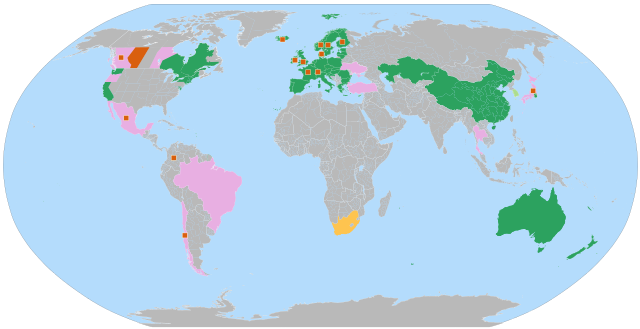Starting 2035, Danes will pay 300 krone ($42.96) per tonne of CO2 emissions on their farms, in the world’s first climate tax.
For a starter, the levy will be 120 krone ($17.18) per tonne of emissions during the transition period between 2030 and 2035.
In that grace period and from 2035 proper, landowners will pay carbon tax the same way they meet other bills. The levy will include emissions from livestock, fertilizer usage and the degree of cultivation in high-carbon land such as meadows.
This breakthrough happens 3 months after the EU dropped demands to cut non-carbon dioxide emissions on member countries’ farms by 30%.
5-month Anxious Journey to Climate Tax
Denmark introduced the carbon levy independent of the EU after 5 months of negotiations by a panel known as the “Green Tripartite.” The panel featured the government, non-governmental bodies, climate advocates and agricultural leagues.
After the talks’ breakthrough, Denmark’s Foreign Minister, Løkke Rasmussen called the agreement the most far-reaching he’s ever joined.
He mentioned natural biodiversity and viable agriculture as some of the long-term outcomes of the carbon taxation system.
Low-lying Land Subsidy
Towards this natural biodiversity is a subsidy of 40 billion krone that will fund the reforestation of low-lying land.
In Denmark, arable lowlands apparently release the most carbon dioxide because of excess tilling and power-intensive drainage needs.
The government understands that farmers on swampy areas will opt in the “reforestation” subsidy rather than pay carbon tax.
Denmark will also use the subsidy to expand forestland by 250,000 hectares (ha) come the year 2045. Out of this acreage, 100,000 ha will be non-commercial.
Extra Goals
On top of reclaiming carbon-intensive farmlands, the government also seeks to reduce nitrogen emissions by purchasing select private farms.
Another goal is to remove farming on 140,000 hectares of lowlands by 2030, even before the tax session begins.
In the interim between 2024 and 2030, Denmark seeks to have cut all greenhouse emissions by 70%. Pertinent to this are forecasts to the effect that agriculture will by 2030 account for 46% of domestic greenhouse emissions. The government also seeks to reduce emissions by 1.8 million tonnes come 2030 from the two biggest agricultural emitters, namely dairy and pork.
In short, through climate tax, Denmark has restructured local “land and food production,”in the words of the Economy Minister. And as the following statistics point out, this is a historic restructuring by regional and global standards.
Denmark Agricultural Emissions Statistics
In global terms, agricultural activity causes 12% of global greenhouse emissions that include carbon, methane and nitrogen. The world’s greenhouse emissions from agriculture alone have increased by 20% in the three decades starting 1990. Though Denmark is not a top 20 agricultural emitter, it contributes to the EU’s 384.4 million tonnes of agricultural emissions (2021). India topped the list of agricultural emitters in 2020 at 741.92 million tonnes, followed by China, Brazil and the U.S.
How important is agriculture to Denmark’s economy?
Agriculture contributes 22% of all Danish exports from all economic sectors. Most of the farm exports go to Germany, Sweden, the United Kingdom and China. The key agricultural goods are dairy, pork and fish.
Which agricultural commodity contributes most emissions in Denmark?
In 2020, Denmark’s farms emitted 10.6 million tonnes of greenhouse gases. The top emitter is the dairy/meat sector at 28% of agricultural emissions. Danish pork comes next, releasing 3.1 kg carbon dioxide in the journey from the slaughterhouse to the market. To mitigate these outcomes, Denmark collects food waste from homes. Between 2017 and 2021, the collection program cut waste by 17%. The country is also considering feed additives in cow fodder to reduce belching, a major contributor of emissions.
